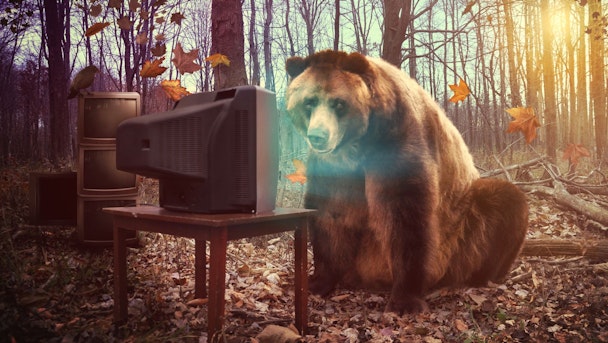The future will be documentary-style content - and brands need to adapt
As part of The Drum’s Future of TV initiative, Poppy Mason-Watts (WaterBear’s chief growth and impact officer) looks at the future of TV and how brands need to adapt to a new landscape by creating documentary-style content, to effectively showcase their credentials.

Successful marketing teams have always been able to move with the times. Those who anticipate change, and understand what trends are likely to become the norm, are those who stay on top of new ways to speak to their audience. It’s how people have adapted to step-change moments over the years in the relationship between brands and their audience: from the boom in TV ownership in the 50’s and 60’s, to the proliferation of social media in the 2010s, and the emergence of influencer culture in the last few years. Navigating these developments can be a serious challenge, but it’s also where the savvy reap serious rewards.
A changing landscape
Today, brands have one of these step-changes to deal with. Brand-led content, such as short documentaries and mini-series, is swiftly becoming a key method for organizations and brands to engage with their audience. From five to 45 minutes, brands are increasingly funding incredible documentary stories. From Patagonia to Rapha and Formula 1, there’s a growing appetite for creating consumer content that can be owned, managed and distributed for years to come. But as the space swiftly becomes more crowded and competitive, marketing teams are going to have to get their approach right if they’re going to keep up with the pack.
Advertisement
In comparison to the standard 30-second advertisement, documentary content connects with the audience for more time, at a deeper level, than traditional advertising can do. It is unlikely that any form of advertising could come near to the effect of Drive to Survive, for example. ESPN’s F1 viewing figures increased from an average of 554,000 in 2018 to 927,000 in 2021.
But equally, this move to storytelling-based content reflects changing attitudes amongst consumers. Especially for younger generations, how a brand behaves is as important as what it ultimately sells. So, content that allows them to see under the hood of a brand’s values is a natural progression.
Advertisement
Now brands have a chance to create a mission or tell impact-led stories that will allow them to be a part of larger social conversations, cultures, and movements. Adidas and Vice’s 20-minute docuseries ‘Running while Black’ powerfully showcases running as an act of resilience. This, on the back of 25-year-old Ahmaud Arbery being murdered while jogging through Satilla Shores, is poignant and a vital story to tell. More and more, brands are supporting documentaries to tell important stories that lead with action and impact.
Marketers need to be clear on the opportunity
Yet to effectively showcase their credentials on a broad range of topics, from sustainability to social justice, through short to medium form documentary content, brands need to get some important decisions right. Notably, marketers must be clear at the outset of the opportunity in front of them, where their new assets live, and what they want their audience to do as a result.
Suggested newsletters for you
Brands that write off this new content format due to price and resources are missing a trick. Production costs for documentaries and series have come down in recent years, to the degree where, armed with a camera, you are now able to produce high-quality content at a fraction of the price of previous decades. Teams should see it as a realistic, near necessary, option.
Hosting the content that they produce in an active rather than a static way is key. What does this mean? Essentially, it boils down to understanding where their audience consumes content for enjoyment. It could be hosted on the brand’s own site, presented as a YouTube series, or even as a Netflix special. Streaming platforms aren’t out of reach, given their widely reported need to maintain viewer numbers while keeping costs down. High-quality, relatable content that is brand-led (and paid for) ticks both boxes.
The need to create impact
Finally, successful documentary content should also present opportunities for viewers to act. Showcasing who you are as an organization is one thing, but people have increasingly shown that we want to actively engage with the issues we care about. That’s the WaterBear model, but in general this approach of creating an ‘ecosystem’ of content will come to be a necessity for brands.
How brands approach content right now could make the difference between success and failure in staying relevant. For marketers, it’s a chance to show they can keep moving with the times.
Content by The Drum Network member:

WaterBear Network
WaterBear is a ground-breaking streaming platform showcasing award-winning documentaries as well as original content - spanning biodiversity, community, climate...
Find out more
